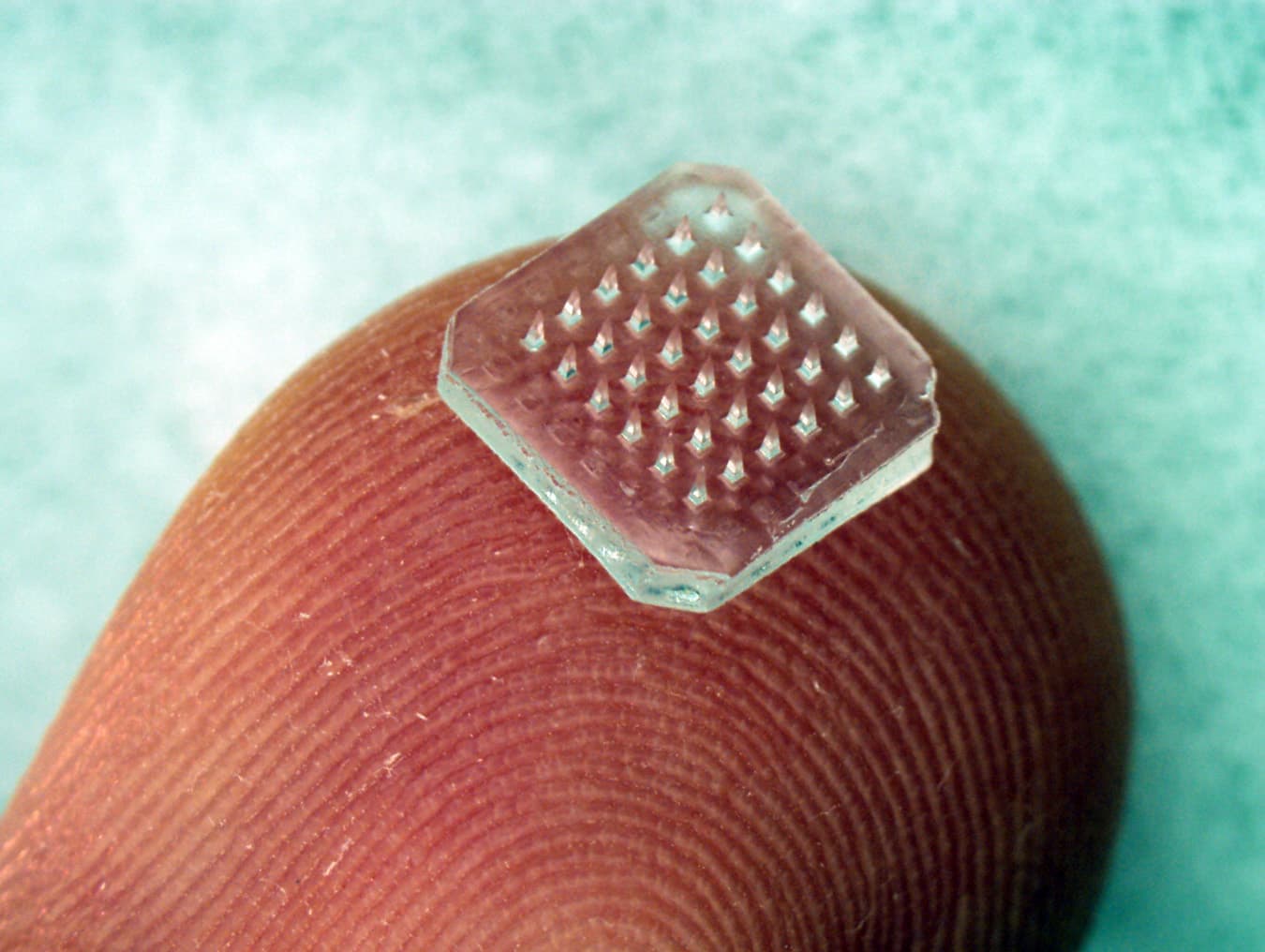Global Immunization
Every year, vaccination saves nearly 3 million lives, according to UNICEF. Immunization programs have eradicated smallpox and are close to stopping polio. Yet, the world’s vaccination campaigns against the most deadly killers, diphtheria, tetanus and pertussis, are not reaching 20% of children. To administer vaccines, trained medical professionals and proper equipment are required, which poses a challenge to reaching those in developing regions. Now, researchers have pioneered a way to easily administer vaccines without the need for professional skill.
MicroHyala
Researchers at Osaka University have developed a dissolving microneedle patch, called MicroHyala, to deliver life-saving vaccinations. The dissolving needles are a successful departure from using silicon or metal, which were both found to be unsafe. MicroHyala’s needles are made of hyaluronic acid, a naturally occurring substance found in our joints. After the patch’s application, the needles go through the epidermis and dissolve into the body with the vaccine they were carrying. In the study, the patch performed as effectively as traditional needle injections and in some cases, better.
The Future of Vaccination
One of the study’s authors, Professor Shinsaku Nakagawa, said their patch is the “only application vaccination system that is readily adaptable for widespread practical use. He highlighted the great potential the easy-to-use patch has for vaccinating in developing countries. This device could be invaluable in immunization campaigns to reach those who don’t currently have access to vaccinations and to, one day, eradicating all preventable disease everywhere.
Sources: ScienceDaily, UNICEF
Image: ScienceDaily
Share This Article
